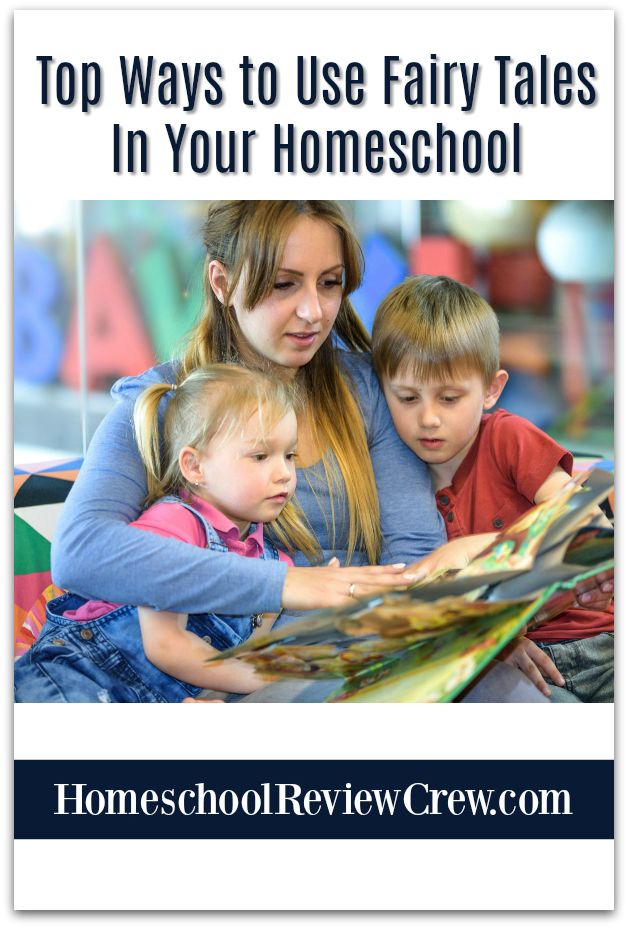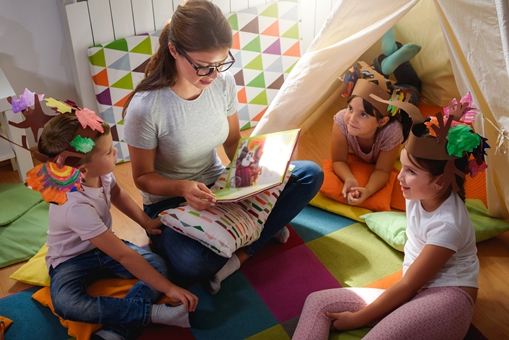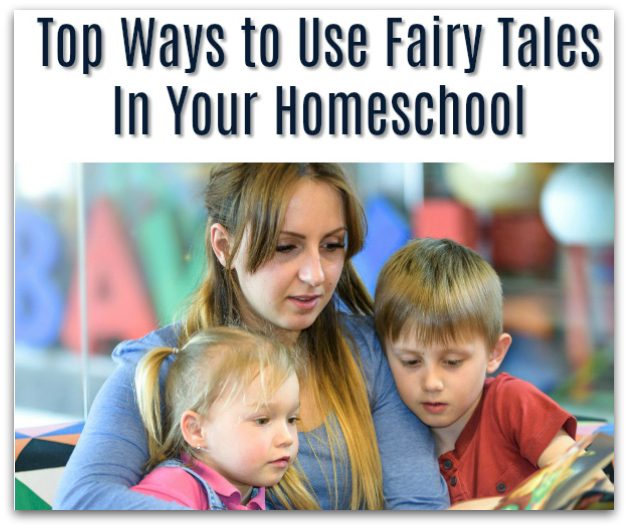“Once upon a time…” Ahh… the most exciting four words I heard for years. Honestly, they still bring a source of comfort and excitement. I feel positively giddy when I hold a book of fairy tales in my hands or read them to my children. I love seeing their faces when they fit pieces together or slide to the edge of their seats in anticipation of good overcoming evil.

Why Read Fairy Tales?
Stories are powerful – there is no denying that. Stories contain words that move people, ignite passions, and change culture. Fairy tales do that for children (and even adults) on many levels.
Finding Virtue
Part of the blessing of homeschooling is that we’re with our children all day long. We have the blessing of training them to love virtue. From The Three Little Pigs to The Fisherman and His Wife, fairy tales explode with character traits and themes that help instill virtue in our children. As toddlers we can discuss the importance of being selfless and honest. As our children continue to expand their understanding we can introduce deeper themes that align with Scriptural teachings. I talk more about this here in this post.
Linking Logic Skills
Everyone loves a good mystery. I know I do! I can remember as far back as middle school when I would read under the covers with a flashlight (raise your hand if you did too). There are predominant themes running throughout some of the most popular fairy tales we know. While reading, we can stop at certain parts and engage our children’s minds with logic questions. These are simple as , “What do you think will happen if…..?”
Fairy Tales Are Fun
No one loves a fun and entertaining story more than a child. Fairy tales are fun and exciting! There are days when we just pull out our collection and take turns picking our favorites. We don’t discuss or ask questions. We just read because they’re fun.

Using Fairy Tales In Your Homeschool
I love fairy tales so much that I wanted to find an intentional way to incorporate them into our homeschool day. When my daughter was preschool age, we spent every night reading them. In second grade, she had concentrated Literature lessons on them which only fueled her love of them.
Using fairy tales in your homeschool should not be stressful or forced. Through much trial and error, I’ve found that stories often speak for themselves without much help from us.
Morning Time
Do you have a special Morning Time each day? Whether you use a pretty basket, organized menu, or a random stack of stuff in the living room (my hand is raised), anything works. You can read from an abridged version, children’s illustrated collection, or even original works.
Most fairy tales, either by The Brothers Grimm, Hans Christian Anderson, or Charles Perriault, are quite short and easy to read.
Unit Study
I love using unit studies in our homeschool. Unit studies are a great way to take a break from the regular schedule and explore something new. Fairy tale unit studies can include one longer tale (such as The Fisherman and His Wife) or shorter ones such as:
- Little Red Riding Hood
- The Elves and the Shoemaker
- The Ugly Duckling
The great thing about homeschooling with unit studies is that you can take as long with it as you want. Take a couple of weeks or stretch it out to six weeks or more. You have the freedom. With younger children, you can include color sheets and activities, while older students can work with narration or literary elements.
Concentrated Literature Time
Speaking of literary elements…exploring these is a great way to have older students do literary analysis. If you have a scheduled literature time in your homeschool, this is a great time to use this. Talk about the antagonist and protagonist in the story. Discuss the conflict, if they think it will have a resolution and how.
While you don’t need to spend a lot of time on this at a younger age, you can absolutely talk about specific themes and morals. We use this time to take turns reading out loud. This allows the children reading practice and increases their fluency as well.
Do you read fairy tales or use them in your homeschool? If not, I hope I persuaded you to introduce them in some form. 🙂
—oOo—
A big thank you to Danielle Poorman of Confessions of A Fairy Tale Mom for writing this article.

